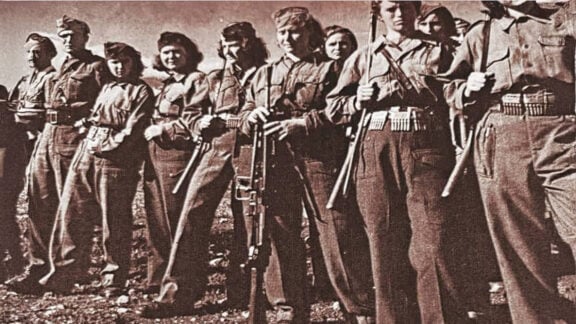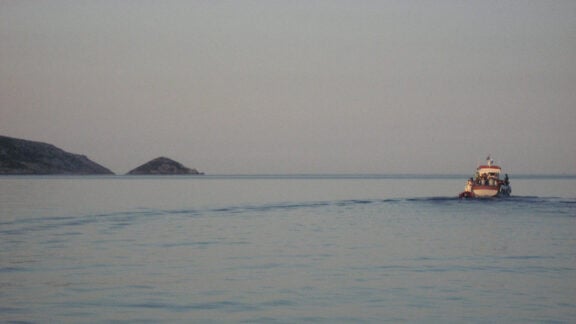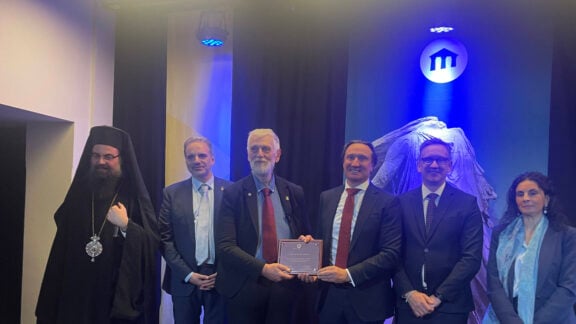I was born in the town of Florina, Macedonia, Greece located in the top north western part of the country adjacent to Albania, FYROM and Bulgaria. My family migrated to Australia in 1954 and I was educated in Australia.
Florina was an ‘oriental’ town belonging to the Ottoman Empire which controlled Greece from 1453 to 1922 with the people of Florina a mesh of multiple ethnic communities and religions; Christians, Greeks, Slavs, Bulgarians, Jews, Turkic and Albanian Moslems, Vlachs and Gypsies. These religious groups lived and worked together in close proximity. Florina was a typical Balkan town in the later stages of the decline of Ottoman rule in the Balkans.
From 1903-18, and including World War One (1914) and the Greco-Turkish War of 1919-22 the entire northern territories of the Graeco-Balkan Peninsula (including Serbia) suffered great population losses through wars, cataclysmic population displacements (ethnic cleansing) and population exchanges. Refugee diaspora was moving in all directions, across from east to west in both directions. This vast political re-construction of Europe and the Balkans may have initially started from wars of revolutionary independence from the Ottomans, and subsequent internal Balkan expansionist claims to new territory, but it was the conflagration of the First World War that irreversibly rocked its cultural foundations for the future, beyond any political value in the creation of new national states in the Balkans and Asia Minor.
This history of diaspora and displacement laid down a new pattern for the 20th century and into the 21st century; a set of historical problems that had and continue to have irreversible impact on the function of community memory in relation to identity experienced by each succeeding wave of refugees and migrants who abandon everything in the simple need to escape and to survive.

THE EXHIBITION
I have chosen to highlight the consequences of cultural uprooting on memory and identity through the images of women from Florina, taken by various others in the period from 1900-1918. These photographs were taken by people who may have had commercial or political agendas in the first instance but the resulting image does not always remain in the control of its maker. Gender is important in this exhibition because it has been traditionally that the female carries the symbolic function of ritual and memory in relation to culture and identity, and ultimately, the idea and meaning of where belonging and home is. In other words the responsibility falls on the woman if there is any question or ambivalence. This responsibility remains a constant memorial and cognitive challenge to the psyche of the female survivor, refugee and migrant.
I have used archival photographic images and reconfigured them to create a narrative representing difference. They have been extracted from their solitary sources from commercial photography, press photography and the archives of the Photographic Section of the French Army (Campaign d’Orient 1916-18).

The installations invite entry to unknown individual histories and emphasise shared past communal lives even though there were multiple political differences and historical consequences. The original images were the result of various kinds of exploitation, both desired and undesired. Photography as a commercial technology played a profound role in the identification and changing of the global meaning of identity that resulted from death during war, disruption and the the re-allocation of populations. Today this usage of images of diaspora continues in the same way via 24/7 news and the internet.
I feel it is important to examine female representation during times of crisis and trauma. My desire is that this exhibition encourages multiple narratives and a focus on recognition and justice for minorities, as well as the recognition and diversity of authenticity. Within the stereotype I look for authenticity, not for purity, and this I know is the case both within multicultural as well as the liberal concerns of justice issues in contemporary art. As a woman it is the moment when, through art, history and photography I accepted the bequest of my own historically difficult position being the reality of my own identity.
‘Girls in Our Town: Women in the Shadow of ‘The Magnificent Empire’. Florina Prefecture, Macedonia. Greece 1900-18, & 2017′ by Elizabeth Gertsakis is now on how at William Mora Galleries (60 Tanner St, Richmond, VIC) until 29 July, 2017. For further details, visit moragalleries.com.au









